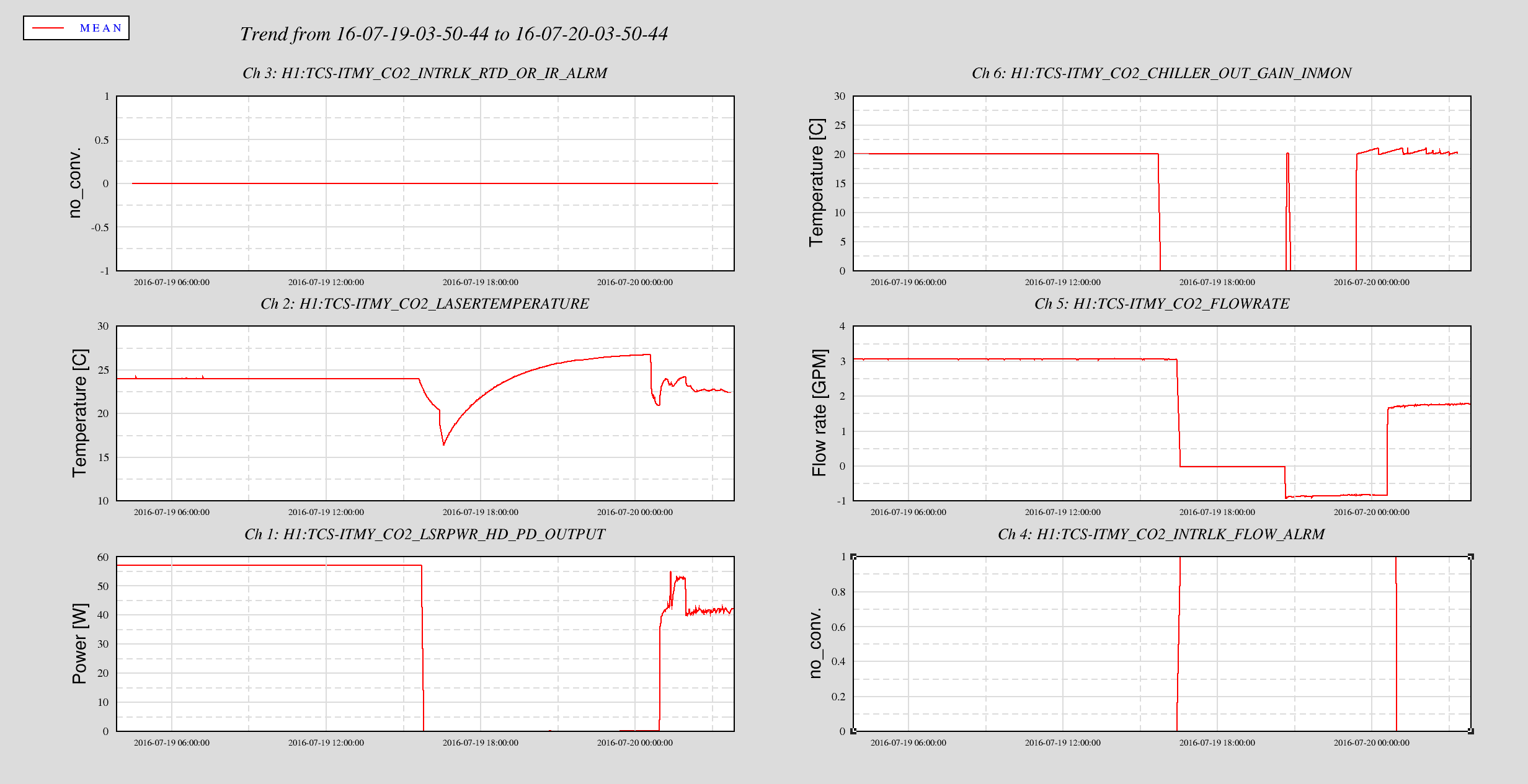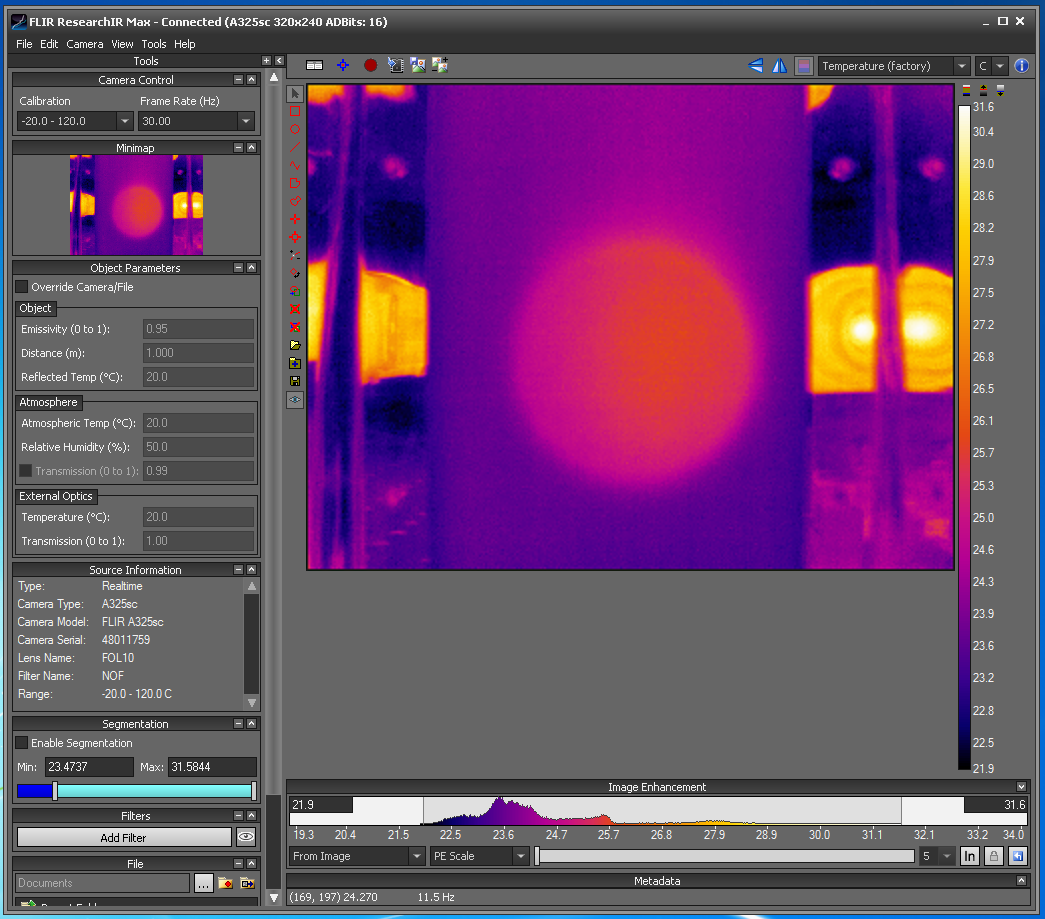-
Maintenance Day
-
Reprogramming of the Timing System to fix the LED Logic will be the top order-of-the-day
-
Entire CDS computer system re-booted 3 times. The last would exceed my shift by 1 hour.
-
PSL AOM ha to be repaired and was successfully fixed and returned to service
-
John Worden brought a personal tour through the CR and LVEA
15:10 Christina bringing a load with the forklift
15:11 Interns out to Y End/MidStations to recover VME crates for Richard.
15:12 Peter reported that the AOM driver for the PSL ISS may have given out.
15:24 Paul to EY to change out a microphone box.
15:33 Betsy in and out of LVEA a few times staging equipment for viewport work.
15:34 Tarvis out to LVEA to start staging equipment for ITM cameras
15:35 Gerardo out to close GV 5 and 7 WP# 5988
15:37 Fil working over HAM3 for GIG-E camera install for BS WP# 6004
15:44 Someone here to service the candy machines
15:45 Christina and Karen out to clean on arms.
15:45 Kyle into LVEA
15:52 Dave McManus into LVEA WP#6006
15:54 Peter in to PSL enclosure to search for spare AOM driver.
16:03 15:11 Interns out to X End/MidStations to recover VME crates for Richard.
16:18 Travis to begin install of ITM cameras. WP# 5988
16:26 Peter out of Enclosure until FE computers are back up
16:27 Fil out to End Stations and CER to move I/O chassis from temporary power to permanent power.
16:33 Interns done at out buildings. Headed into LVEA for VME crates.
16:34 Desk Delivery through front gate.
16:41 LN2 delivery arrived -Y arm
16:42 Jim B, Ansel et al into CER to begin Timing reprogramming.
16:46 Visitors for John Worden on site.
16:50 Richard into CER to look at camera stuff.
16:50 Hugh to End Stations for weekly HEPI fluid level checks.
16:54 Cintas on site to change out mats
16:57 entered FRS report (5900) regarding very low audio level coming from Gate Call Box
17:00 Dave B ready to restart PSL computers
17:08 Interns out of the LVEA
17:12 Kyle into LVEA to look for Ameristat
17:16 Kyle out!
17:36 Hugh done with weekly HEPI fluid checks
17:42 John taking guests on an LVEA tour
17:42 Karen into LVEA
17:46 Peter preparing to go back into the PSL enclosure to deal with the AOM
17:47 Travis et al are out of the LVEA for today. Reportedly 55% done.
17:48 Richard out of the CER.
17:51 Fil done with I/O chassis
17:53 Timing crew out of the CER
18:10 Fil out to floor to look for IO table patch panels
18:11 Dave and Ansel out to both Mid and End stations for Timing upgrade work.
18:12 Interns to outbuildings and floor again to complete the previous task (VME Crates)
18:14 Water delivery on site.
18:17 Jenne out to LVEA to assist Dave M with seismometers
18:28 Dave reporting from EY. Also, Norco leaving site.
18:29 Gerardo and Chandra are opening GV5 and GV7
18:39 HEPI EY Diff Pressure alarm (RED)
18:41 GVs are OPEN
18:55 Jenne and David out of LVEA for lunch.
19:06 Karen out of the LVEA.
19:12 Gerardo out of the LVEA
20:02 Gerardo and John are going down Y arm, a little past Mid.
20:10 Fil out to pull cables at HAM1 and 2.
20:09 Chandra out to EY
20:16 Travis and Gerardo out to EY
20:53 Travis back from EY
20:54 Chandra and Gerardo to EX
21:19 Gerardo and Chandra back to corner
22:16 Dave at EY for reboot #3
22:44 " " EX" "
22:45 Handing off to Jeff






















